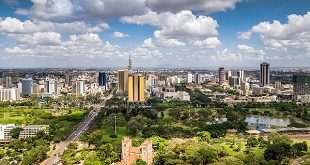
By Agnes E. Nantaba
Why should the martyrs be honoured this way?
The scene is scary. The 23 men and boys, tied up with ropes, are being burned in a flaming bonfire of wood and reeds. The fire has already scorched the hair off their heads and the oily skulls glisten against a backdrop of shinning sharpened spears. But oddly, the expressions on the faces of the burning men appear fearless; even peaceful and joyous. Partly, that is because it is a sculpture.
What it depicts are the scenes of the martyrdom of 23 Christian Catholic men at Namugongo, a suburb 16kms away from Kampala. The sculpture, one of similar ones to be found among devout Christians, hangs in the house of Josephine Mbatudde.
She says it is reflection of her devotion to the martyrs. Next to the sculpture of the martyrs is a painting of the 22 canonised Catholic martyrs standing before a ruthless-looking figure of authority. That is then-Kabaka Danieri Basammula-Ekkere Mwanga II of the Buganda kingdom. He ordered the burning of the martyrs in 1886.

But in an ironical twist, Mwanga’s great-great-great son; Kabaka Edward Frederick Mutesa, who became king in 1942 offered the church a veneration alter for the martyrs. It is a fascinating story that is replayed every June 3 when Martyrs Day is marked in Uganda every year.
The 23 Catholic martyrs are usually celebrated together with the 22 martyrs of the Christian Anglican church. Their shrines in Namugongo are adjacent to each other. Together, the martyrs are considered to have sown the roots of Christian devotion in Uganda. They were made saints on October 18, 1964 by Pope Paul VI during the Vatican II conference, the Uganda Martyrs are venerated for their faith, courage and witness to Christ.
Mbatudde highly reveres these saints in her home. She named her only son Mark; after one of the martyrs Kakumba Makko (Mark).
“It is such saints who offer to God the prayers of us who are still living and with their righteous deeds, our father can surely hear our prayers through them,” says Mbatudde.
She describes how her family gathers every evening after supper to intercede through the saints. She says their prayers have been answered so often that Mbatudde has lost count.
“I would not be who I am or have such possessions without the Uganda Martyrs,” she says proudly.
Far away in Matugga, 34kms from Namugongo is another martyr devotee. Noweline Nakamanya has walked to Namugongo every Martyrs Day for the last 36 years. This year she is 75 years old and ready for the 37th pilgrimage. When she spoke to The Independent she was getting ready for the journey.
Noweline Nakamanya has walked to Namugongo for the last 36 years. From Matugga, Nakamanya sets off for the 34km journey
Every June 2, she and other congregants from the same parish start the long walk very early in the morning. By evening they are in time for the mass conducted in the Basilica of the Martyrs at Namugongo.
“The healing powers of the martyrs broke the long bondage of barrenness from my daughter,” she says, “It was only after attending the 1998 martyrs’ celebration that she was delivered.”
Biggest pilgrimage in Africa
Nakamanya is just one of thousands of Christians who trek to Namugongo on foot. The pilgrims also spend the hours on the long journey invoking the Uganda Martyrs to intercede to God on their behalf in overcoming their problems. Most are Catholic, according to Rev. Can. Henry Segawa, the Principal of Uganda Martyrs Seminary.
“Anglicans still lack the commitment and fanaticism to go through such thick and thin like our Catholic counterparts. But with the current developments, the numbers will drastically grow,” he says.
This year, 300 pilgrims from Lira; about 300kms away, and hundreds of others from western Uganda walked walked to Namugongo. But even those who might not walk out of devotion, security consideration and sheers numbers mean they cannot reach the shrine by vehicle. Some of these are not pilgrims. Most are tourists and many are business people selling foodstuffs, religious paraphernalia, and general merchandise to pilgrims. The Catholic Church registers them and offers them workstations for a fee. The shortest distance they must walk is about 10kms to the shrine from the nearest towns.
Records from the Catholic shrine at Namugongo indicate that over one million pilgrims from Uganda and beyond attended prayers at last year’s celebrations. The Anglican monument, which usually gathers a smaller crowd, had an estimated 400,000 pilgrims. This year, the numbers will be higher. Over 2000 Catholic pilgrims from Democratic Republic of Congo, 400 from Tanzania, and 100 from Nigeria confirmed their pilgrimage. The trek to Namugongo has become one of Africa’s biggest pilgrimages.
The climax of all the events is the celebrations of mass on 3rd June. The liturgy celebrations are organised by a different diocese each year after the other. The leading diocese also leads the processions and liturgical dances.
This year, for the Catholics, Bishop Joseph Franzelli of Lira Diocese will give the sermon. For the Anglicans, the mass will be led by Kampala diocese with Archbishop Benjamin Kwashi from Nigeria as the guest preacher.
Why should the martyrs be honored this way?
Every June 3 of each year, Christians in Uganda and possibly around the globe, are confronted afresh with this question. For the devoted making the annual pilgrimage to the Namugongo Shrines, the answer is as clear as it is simple.
The Bishop of the Anglican Namirembe Diocese, Rt. Rev. Wilberforce Kityo Luwalira says the martyrs are venerated for giving up their life for their faith.
“We go to Namugongo to recap on how to live on the love of God because nothing can separate us from the love of God,” Luwalira says.
Mwanga had been told that the men, who were pages in his court, had denounced all the native religious behavior and practices as heathen and satanic. The new converts, who were called abasomi, or readers, as they read the Bible, were regarded as ‘rebels’ to the king. When he summoned them, he demanded that the men, who were his pages, denounce their new Christian faith and choose between life at the palace or a cruel torturous death.
Graham Walusimbi, a tour guide at the Anglican monument says they chose to stick with their new faith, even unto death. On Mwanga’s orders, some were burnt at the stake while others were cut alive into pieces and left to be eaten by wild animals.
When Pope Paul VI made a pilgrimage to Namugongo on August 2, 1969, he posed this question to the congregation.
“But, you will ask me, why should the martyrs be honored?’ he said.
He answered: “It is because they have performed the most heroic, and therefore the greatest and most beautiful of all actions; they have laid down their lives for their faith, that is, for their religion and for the freedom of their conscience.”
“Martyrs teach us just how true Christians should be, especially young Christians, African Christians. For Christians must be courageous, they must be strong, as Saint Peter wrote, `be firm in the faith’ (1 Pet. 5, 9). Your Martyrs teach us how much the faith is worth!”
Today, a visit to the Anglican monument cannot miss the small original parish church with the alter housing the grave of the martyrs. It has the pulpit donated by King Muteesa II. Besides this shrine is the Ndabazadde tree on which, it is believed, the martyrs were tied and tortured before they were killed under the command of the chief executioner, Mukajjanga. The shrine has Mukajjanga’s command post.
The Catholic shrine is dominated by the massive basilica. Next is a man-made lake ensconced in the in the middle of the sprawling 15-acre green shrine gardens.
Rev. Fr. Joseph Mukasa Muwonge, the promoter of the devotion of Uganda martyrs at the shrine says the lake was dug in remembrance of the work executed by St. Charles Lwanga while still a page in Kabaka Mwanga’s palace.
“St. Charles spearheaded the excavation of the legendary Kabaka’s lake at Mengo, therefore a Martyrs’ lake was excavated at Namugongo in his honor,” said Muwonge.
The island-like circular grass-thatched Pavilion next to the lake is perfectly set to be clearly viewed from all angles of the shrine. It is where the main celebrant sits on big occasions like Martyrs Day. Supported by four pillars, it accommodates up to 300 priests and bishops. This year, it had been hoped that the main celebrant would be Pope Francis. The hope was lit when President Yoweri Museveni met Pope Francis in the Vatican and it appeared he had accepted an invitation to make the pilgrimage to Namugongo. It was wishful thinking. However, the organisers appear determined to give pilgrims a new experience this time.
Catering for children
Among new items that have been added to the Martyrs Day celebrations at the Anglican monument at Nakiyanja Namugongo, is a special day dedicated to children. This will be on May 30.
“By ministering to the children, we are building and establishing the church for tomorrow,” says Archbishop Stanley Ntagali of the Anglican Church of Uganda, ““Due to the thousands of people who converge on June 3rd, children miss out on the day’s message and therefore needed special attention.”
The chairman of the taskforce organising the celebrations, retired Lt. Col. Robert Ssekidde said this year’s celebrations will bring the children at the forefront in order to maintain the continuity of the martyr’s remembrance.
Martyrs’ museum
Anglican Christians will experience the developments of the museum under construction. The Shs12 billion museum; according to the committee head, Archbishop Emeritus Mpalanyi Nkoyoyo, is meant to house unique and meaningful artifacts to reflect the rich religious, cultural social and political history of the Anglican Church in Uganda and the world. It was initially designed as an inter-denominational venture of Anglicans, Catholics, and Muslims. But the Anglican are pursuing it alone after they disagreed on approach. According to Rev. Fr. Joseph Mukasa Muwonge, the Catholics will maintain their museum at Rubaga Cathedral.
Graham Walusimbi, a tour guide at the Anglican martyrs’ monument says three sections; including the torture site, holocaust site and the office of the chief executioner – Mukajanga, will be housed in a main section which is nearing completion.
“There are 47 pillars in the museum each representing a martyr regardless of whether Catholic and Anglican together with Bishop James Hannington who was murdered in Busoga and Archbishop Janan Luwum who are also regarded as heroes of faith,” says Walusimbi. The museum will include art stations and galleries, lounges, internet stations, and library.
Bottled holy water
On the Catholic side, there is a plan to clean and purify the water that pilgrims draw from the man-made lake with a belief that it blessed. The plan, according to Rev. Fr. Joseph Mukasa Muwonge, will include emptying the lake of the water and clay. He said people from all over the world draw the lake water believing that is holy but it can be contaminated. “Purifying and bottling will make it healthier for consumption,” he said. The practice of honouring the martyrs may change, but the devotion does not.
 The Independent Uganda: You get the Truth we Pay the Price
The Independent Uganda: You get the Truth we Pay the Price



